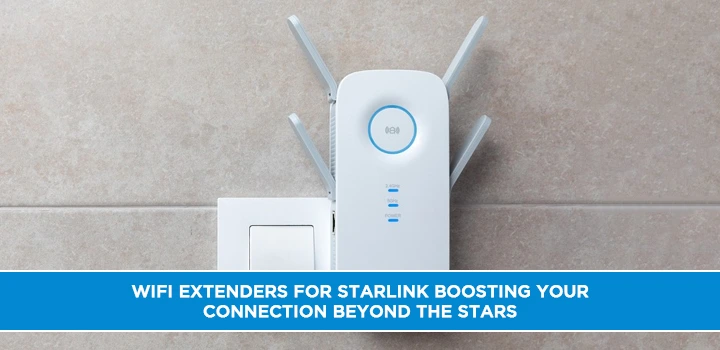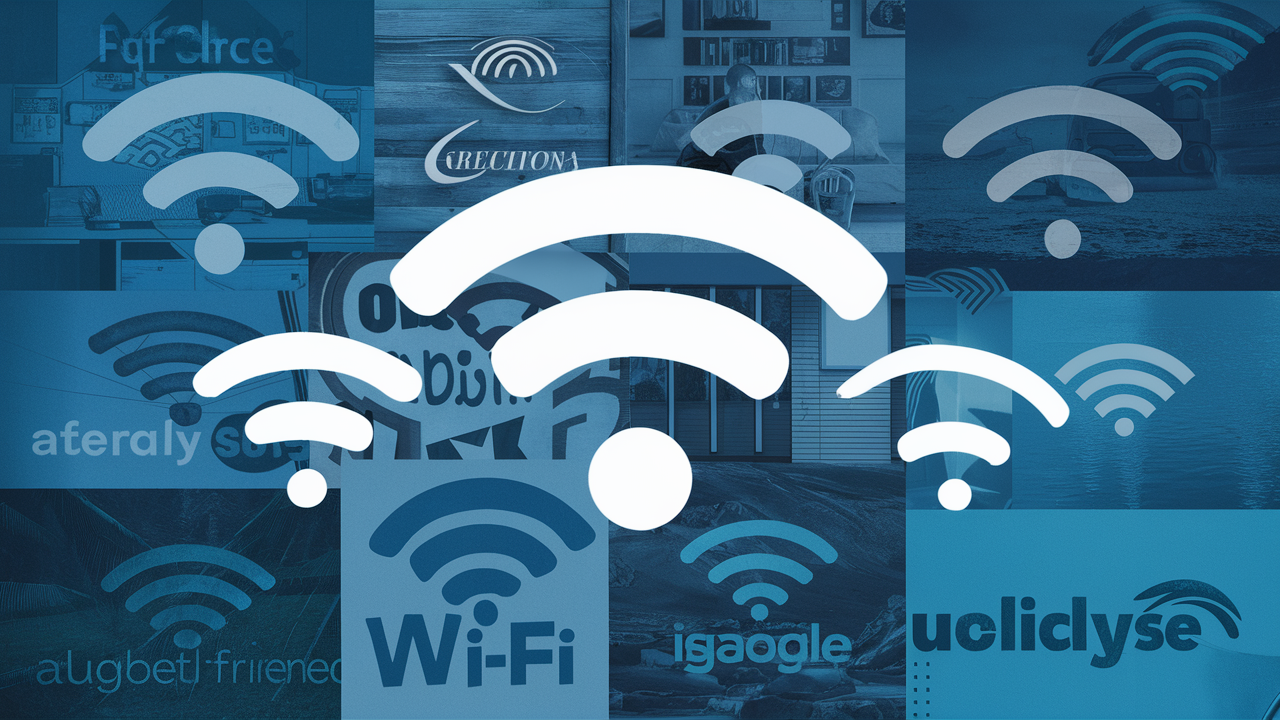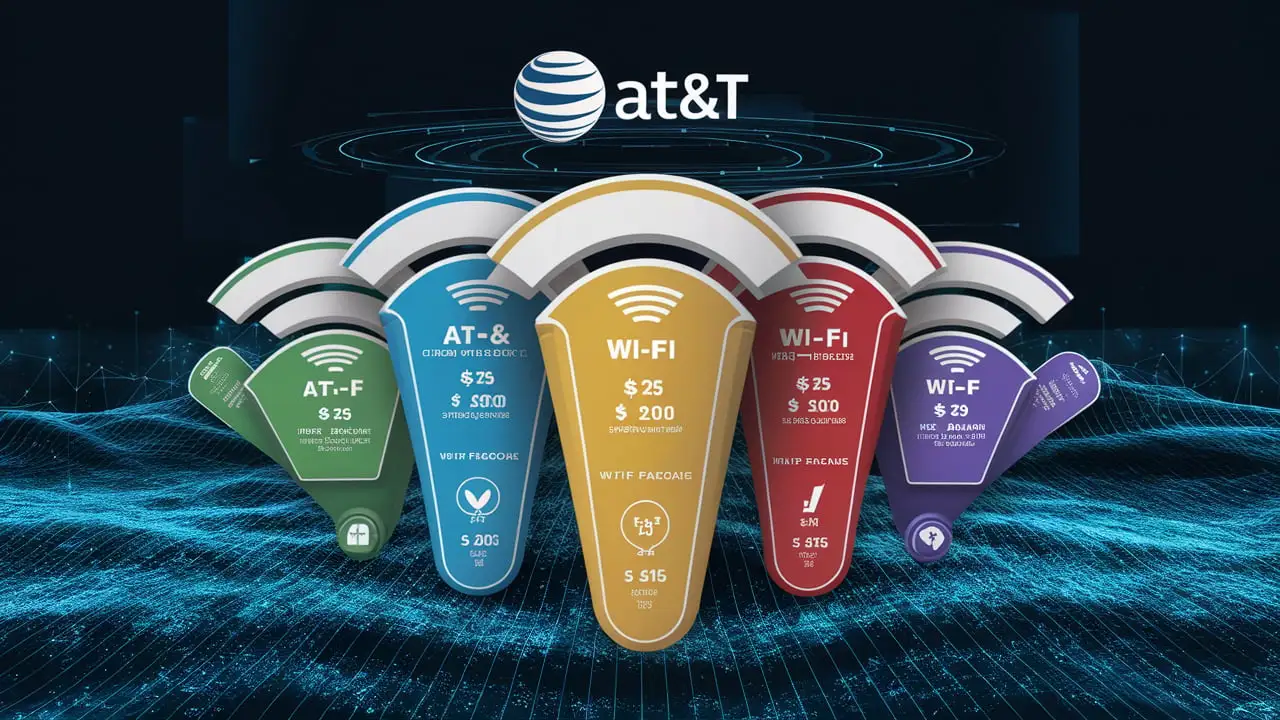WiFi Extenders for Starlink Boosting Your Connection Beyond the Stars

In a world where connectivity is crucial, the emergence of satellite-based internet services like Starlink has revolutionized how we stay connected. However, even cutting-edge technologies sometimes face limitations, and one common challenge with Starlink is maintaining a strong and consistent signal, especially in areas with obstructions. This is where WiFi extenders for Starlink come to the rescue, bridging the gap and ensuring seamless connectivity. In this article, we will delve into the world of WiFi extenders, exploring their benefits, types, setup, and compatibility with Starlink. Let's enhance your Starlink experience and reach for the digital skies!
Understanding the Need for WiFi Extenders
Starlink, with its constellation of satellites, has opened up new possibilities for global internet coverage. However, challenges such as terrain, buildings, and other obstructions can weaken the signal, leading to slower speeds or even loss of connectivity. This is where WiFi extenders prove their worth by amplifying and spreading the signal to areas that would otherwise be in the shadows.
How WiFi Extenders Work
WiFi extenders, also known as repeaters or boosters, work as intermediaries between your Starlink satellite dish and your devices. They capture the signal from the satellite dish and rebroadcast it, effectively expanding the coverage area.
1. Understanding the Basics:
At their core, WiFi extenders function by receiving and amplifying existing WiFi signals from your router and then retransmitting them to extend the network's coverage. In simpler terms, they act as intermediaries between your devices and the main router, boosting the signal strength in areas where it tends to weaken.
2. Dual-Band Extenders:
Most WiFi extenders operate on dual bands—2.4GHz and 5GHz. The 2.4GHz band provides a wider coverage area but at slower speeds, while the 5GHz band offers faster connection speeds but over shorter distances. Dual-band extenders help balance the trade-off between coverage and speed.
3. Placement is Key:
To ensure optimal performance, proper placement of WiFi extenders is crucial. They need to be positioned within the range of your existing router's signal but also close enough to the areas where you desire stronger coverage. Finding the sweet spot may require some experimentation, as the ideal location varies depending on the layout of your space.
4. Signal Amplification:
WiFi extenders rely on their built-in antennas to amplify the existing WiFi signal from your router. These antennas capture the signal and retransmit it at a higher power level, effectively extending your network's coverage area.
5. Seamless Roaming:
The latest WiFi extender models often feature seamless roaming capabilities. This means that as you move around your home or office, your devices will automatically connect to the strongest available signal, seamlessly transitioning between the main router and the extender. This feature eliminates the hassle of manually switching between networks as you move around.
6. Network Security:
Keeping your network secure is paramount, even when using WiFi extenders. Most reputable WiFi extender manufacturers integrate security features into their devices. These can include encrypted connections and even guest network access management, ensuring your extended network remains safe.
7. Compatibility:
WiFi extenders are designed to work with most standard routers. However, it is crucial to check the compatibility of the extender with your specific router make and model before purchasing. Some extenders also come with setup apps that assist with compatibility checks and configuration.
The Benefits of Using WiFi Extenders with Starlink
Using WiFi extenders with Starlink offers several benefits. It helps in overcoming dead zones, ensures a consistent connection throughout your space, and allows you to make the most of Starlink's high-speed capabilities.
Types of WiFi Extenders
1 Mesh WiFi Systems
Mesh systems consist of multiple devices that work together to create a seamless network. They are ideal for larger spaces and provide strong coverage across various rooms.
2 Signal Boosters
Signal boosters amplify the existing signal, making them suitable for areas with a weak but still present Starlink signal.
3 Plug-in Range Extenders
Plug-in extenders are easy to install and are great for enhancing the signal in specific areas, like home offices or entertainment rooms.
Choosing the Right WiFi Extender for Starlink
Selecting the right extender depends on factors like your space's size, the intensity of obstructions, and your specific needs. Mesh systems are great for extensive coverage, while signal boosters target weaker signals.
Setting Up Your WiFi Extender with Starlink
Setting up your extender involves finding the optimal location, connecting it to the Starlink network, and configuring its settings. Manufacturers usually provide step-by-step instructions.
Tips for Optimizing Extended WiFi Networks
To make the most of your extended network, place the extender strategically, keep it updated with the latest firmware, and secure it with a strong password.
Common Challenges and How to Overcome Them
Common challenges include interference from other electronic devices and the positioning of the extender. By selecting the right channel and finding the right spot, these challenges can be mitigated.
Compatibility with Starlink: What You Need to Know
Most WiFi extenders are compatible with Starlink, but it's recommended to choose one from Starlink's official list of recommended devices to ensure optimal performance.
Comparing Built-in Antennas vs. External Antennas
Some WiFi extenders come with external antennas that can be positioned for better coverage. However, built-in antennas are more convenient and less obtrusive.
The Future of Satellite Internet and WiFi Extenders
As technology advances, we can expect more integration between satellite internet services like Starlink and WiFi extenders, leading to even better coverage and speeds.
Why WiFi Extenders Are a Game Changer for Starlink Users
WiFi extenders are not just accessories; they are essential for maximizing your Starlink experience. With their help, you can overcome connectivity hurdles and explore the full potential of satellite-based internet.
Conclusion
In a world where staying connected is non-negotiable, WiFi extenders for Starlink offer a lifeline for seamless and reliable internet access. By understanding their types, benefits, setup, and compatibility, you can create a robust network that defies distance and obstructions. So, whether you're in a bustling city or a remote countryside, with the right WiFi extender, your digital voyage through the stars remains uninterrupted.
Call (855) 210-8883 to get an internet connection now!
FAQs About WiFi Extenders and Starlink
1 Can I use any WiFi extender with Starlink?
While many WiFi extenders are compatible with Starlink, it's advisable to choose from Starlink's list of recommended devices for optimal performance.
2 What is the ideal placement for a WiFi extender when using Starlink?
The ideal placement involves putting the extender in a location that receives a strong Starlink signal but can also effectively broadcast that signal to the desired areas.
3 Are there any special considerations for rural areas?
Rural areas might have more obstructions or greater distances between devices. In such cases, a powerful extender might be necessary.
4 Can WiFi extenders affect my internet speed?
While WiFi extenders can slightly reduce speed due to the way they rebroadcast the signal, a good extender should maintain high-speed connectivity.
5. Is it possible to extend WiFi coverage across multiple buildings?
Yes, it's possible to extend WiFi coverage to multiple buildings using a combination of strategically placed extenders and a strong network backbone.





